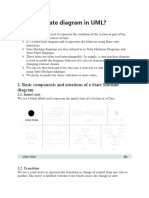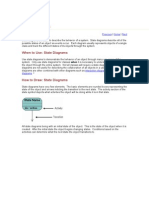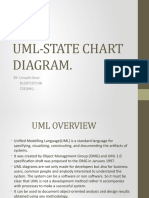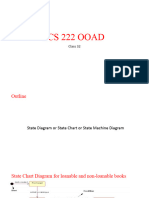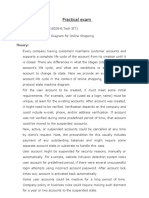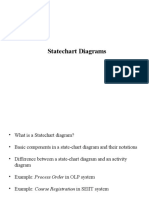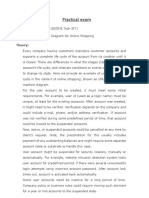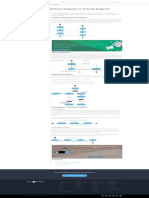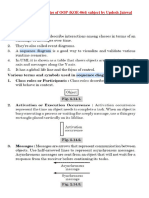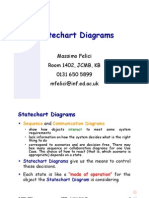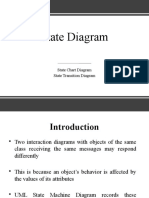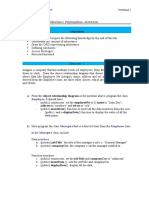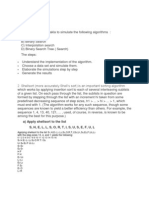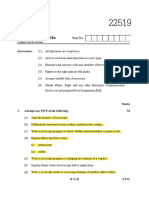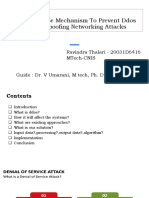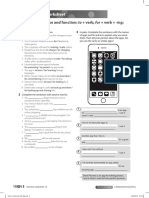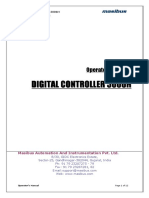0% found this document useful (0 votes)
103 views8 pagesUML State Diagrams Explained
A state diagram models the different states an object or system can be in and the transitions between those states. It represents the dynamic behavior of a system in response to external events. The diagram uses various notations like states, transitions, forks, and joins to depict the changes in state. Common elements are the initial state, transitions between states labeled with triggering events, and typically a final state. State diagrams are useful for understanding how objects react to stimuli over time.
Uploaded by
sahara77usCopyright
© © All Rights Reserved
We take content rights seriously. If you suspect this is your content, claim it here.
Available Formats
Download as PDF, TXT or read online on Scribd
0% found this document useful (0 votes)
103 views8 pagesUML State Diagrams Explained
A state diagram models the different states an object or system can be in and the transitions between those states. It represents the dynamic behavior of a system in response to external events. The diagram uses various notations like states, transitions, forks, and joins to depict the changes in state. Common elements are the initial state, transitions between states labeled with triggering events, and typically a final state. State diagrams are useful for understanding how objects react to stimuli over time.
Uploaded by
sahara77usCopyright
© © All Rights Reserved
We take content rights seriously. If you suspect this is your content, claim it here.
Available Formats
Download as PDF, TXT or read online on Scribd
/ 8

